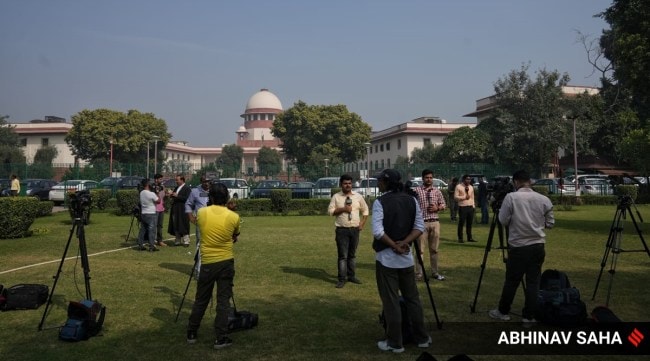Opinion Former Law Minister Ashwani Kumar writes: With Centre clearing Collegium’s recommendations, an opportunity to address executive-judiciary impasse
A progressively evolving jurisprudence must permit reconsideration of the present system of judicial appointments. In this process, government and judiciary need not be seen as adversaries
 "While the collegium system of appointments is today the judicially-ordained law of the land and ought not to be tampered with, there should be no impediment to revisiting the extant mechanism in the light of experience," writes Ashwani Gupta. (File)
"While the collegium system of appointments is today the judicially-ordained law of the land and ought not to be tampered with, there should be no impediment to revisiting the extant mechanism in the light of experience," writes Ashwani Gupta. (File) The central government’s clearance of the five recommendations made by the Supreme Court collegium for appointment as judges of the apex court must put to rest apprehensions about an escalating conflict between the executive and judiciary on the issue of judicial appointments.
The government’s response in the face of an emerging standoff between two pillars of the Indian state demonstrates that when put to the test, those charged with the working of the Constitution can rise to the occasion. This is a welcome respite for a nation fatigued by the cynicism and superciliousness of those charged with the duty to enforce constitutional edicts. Hopefully, the decision will foster comity between democratic institutions to collectively subserve constitutional goals and bring to an end the debilitating public spat between high constitutional functionaries on the subject of judicial appointments — at least till a broader debate yields a better result.
Clearly, the outstanding issues that impact the relationship between the executive and judicial branches need to be constructively addressed in an environment free of mutual suspicion and distrust.
While the collegium system of appointments is today the judicially-ordained law of the land and ought not to be tampered with, there should be no impediment to revisiting the extant mechanism in the light of experience. It also rests on the debatable premise that judicial independence, as part of the Constitution’s basic structure, is best secured only when the judges appoint judges.
In fact, it is indisputable that some of the finest judges were appointed to the highest court before the judicial conception of the collegium. The present system’s stated purpose of ensuring judicial independence has blunted criticism of the judicial approach. Apprehensions of judicial overreach resurfaced when the NJAC judgment declared the related constitutional amendment as unconstitutional.
A progressively evolving jurisprudence must permit a reconsideration of the present system of judicial appointments. In this process, the government and judicial branch need not be seen as adversaries — the Supreme Court has affirmed on several occasions that the three branches of the Indian state are expected to work together in facilitating the advancement of judicial goals.
The challenge “to reconcile constitutional authority with popular sovereignty” is a perennial one. The debate that has begun afresh must contend with several questions.
First, can the justification of the Court’s anti-majoritarian role be used to equate constitutional supremacy with judicial supremacy that is sought to be ensured through the finality of judicial pronouncements of the constitutional court? Can the mandate of the Court as the supreme judicial arbiter be located in its inferential deductions from the Constitution in the face of an expressed constitutional intent?
These and several issues of critical importance for the future of our constitutional democracy are once again in the public domain. In navigating our course as a vibrant and accountable democracy, we need to find the right balance between competing jurisprudential preferences. In working out a compromise, the exercise of constitutional power ought to be informed by a spirit of “self-search and self-reproach”.
It is possible for both Parliament and the Court to collectively serve as the nation’s “North Star” within the discipline of the Constitution. In drawing the “Lakshman Rekha”, the Supreme Court can be a “light unto the nation” even if it cannot be a “sheriff unto the nation”.
The writer is a senior advocate and former Union Minister for Law and Justice





